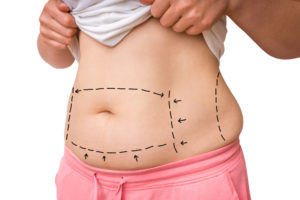
When it comes to getting that hourglass figure, tummy tucks are still king.
While fat reduction treatments are all the rage right now, they simply won’t have the same dramatic effect as a tummy tuck.
But, surprisingly, there might be an even more effective technique that leads to those amazing tummy tuck transformations.
Almost Like a Corset
Tummy tucks, properly called abdominoplasties, typically create tension vertically. While this is effective, a slight variation on the procedure produces even more dramatic result. Dr. German Newall uses a technique that creates high-tension laterally and gives the body a more sculpted look.
Dr. Newall combines this lateral high-tension tummy tuck with proactive liposuction and tightening of muscles in the midline.
The effect? The waist is brought in, almost like a corset.
But How’s It Actually Work?
Essentially, when tightening the muscles and closing the surgical cuts, a higher amount of tension is placed on the muscles. But more important is that lateral directing of tension: low, and to the sides.
This is achieved, particularly, by pulling at the superficial fascial system of the thighs. Put in easier to understand terms, when closing the surgical wound, tension is cultivated by pulling at the upper layers of skin and muscle around the thighs.
The result is the “cinching” effect of the waist, combined with a lifting and narrowing of the thighs. Talk about a twofer!
Is the Tummy Tuck Right for Me?
Tummy tucks are a more serious procedure than most cosmetic treatments, and therefore patients should do their due diligence. Patients should check over lists of contraindications, which planned pregnancy in the next year.
Before considering a tummy tuck, patients should research whether they can achieve the results they want with diet and exercise or with less invasive procedures. Some results, however, will only be practically realizable through a tummy tuck.
Patients who think they might fall into this category should consult seriously with their general physician and then a specialist. For more information, call here or check here.

